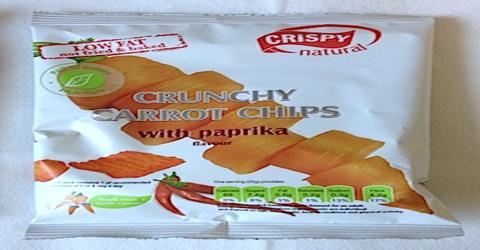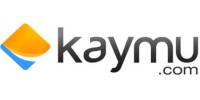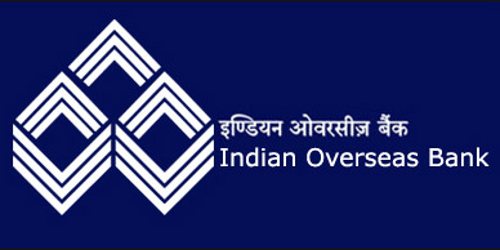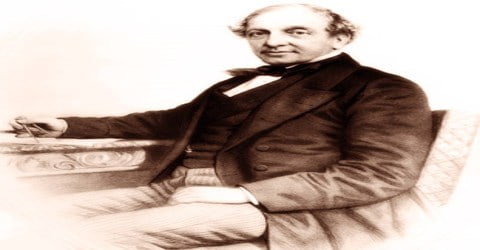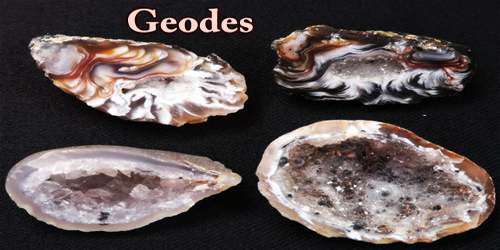Ispahani launched Ispahani PureSnax potato chips with intent to provide high quality food products in competitive price. Ispahani Food was added to the company line of this conglomerate. Chips is a popular snacks item in our country now a days. Within a short time this product has ensured its position both in urban and rural area. The market size is fairly large and it is expanding day by day. Ispahani is expanding its market promotional activities through different media all over the country. To capture the large part of chips market, media is an important tool to be communicated with the consumer. By keeping it in the mind, our research is focused more significantly on media habit. That’s why, the following media factors, we have taken under considerations.
Executive Summary
As a part of academic program for business graduate students, each of the Intern students needs an organizational attachment. Being attached with M.M Ispahani Ltd. is such a good opportunity to fulfill the internship program. During a specified time period of internship, the students are required to prepare a report on the organization where she/he has been attached. The purpose also requires the students to undertake a business problem/area of investigation of the organization for detailed study and reporting.
M.M. Ispahani Ltd. has been operating its business in Bangladesh for a long time with an admirable reputation. The area of business operation of the group is large as well as varied which comprises ten separate companies ranging from tea to poultry.
With intent to provide high quality food products at competitive price Ispahani Food was added to the company line of this conglomerate. Ispahani food launched Marshal Chips in the year of 2000 considering the rapid popularity of fast food items.
Chips are a popular snacks item in our country now a days. Within a short time this product has ensured its position both in urban and rural area. The market size is fairly large and it is expanding day by day.
From upper class to lower class, people of all strata of the society have demand for this food. In general, people of middle class to upper class are the major consumer of this product. Bombay Sweets is the pioneer in the packet chips industry in Bangladesh. They launched Bombay Sweets Potato Crackers in 1985. At that time there was not other competitors for packet chips.
Through their widespread network they have made the products available in all over the country. Gradually the market has been expanded and now there are as long as more than eighth competitors in the market. There are more than twenty brands in the market with three international competitors.
Besides packet chips there is a huge market of home made chips. Though they are the players of chips industry, are not direct competitors of Ispahani. Most of the companies distribute chips through distributors except Ispahani, Meridian, and Square. These two brads are distributed through their own distribution channel. Usually small enterprises or wholesalers are selected as distributors considering some criteria like capital, risk bearing capacity, network in the market, previous track record etc. For the purpose of this study we have conducted surveys by questionnaire method.
Consumer of age ranging from five to fifteen was surveyed to know their daily routing, how to spend their leisure time, favorite program, favorite channel, favorite paper or periodic etc. Survey was conducted on five divisional cities where people gather. These divisions are: Dhaka, Chittagong, Khulna, Sylhet, and Rajshahi. Peoples of different divisional city have different idea about the media and their different point of view depends on their demographic status and knowledge about the product. Finally, in our research paper, we have tried to find out the relationship between the media habit and the respondent behavior towards our product.
Introduction:
Purpose of the study:
Marketing communication is a strong factor to adopt any product or service more effectively in the consumer market. Strong viable communication process requires the company to be proactive about media for well keeping mental map to the consumer mind. Both electronic and print media attracts consumers very significantly and people show their behavior according to their belief, knowledge, language, etc. through their attitudes. Purpose of our study was to figure out the daily activities as well as the factors that influence to make decisions about the media habit of our targeted consumer. So, to make our brand name well communicative to the consumer mind, we have tried to find out the daily activities, consumer’s needs, wants, preference, requirements, and constraints, which influence to shape their media habit.
Background of the study:
M.M. Ispahani Ltd. has been operating its business in Bangladesh for a long time with an admirable reputation. The area of business operation of the group is large as well as varied which comprises eleven separate companies ranging from tea to poultry.
Ispahani launched Ispahani PureSnax potato chips with intent to provide high quality food products in competitive price. Ispahani Food was added to the company line of this conglomerate. Chips is a popular snacks item in our country now a days. Within a short time this product has ensured its position both in urban and rural area. The market size is fairly large and it is expanding day by day. Ispahani is expanding its market promotional activities through different media all over the country. To capture the large part of chips market, media is an important tool to be communicated with the consumer. By keeping it in the mind, our research is focused more significantly on media habit. That’s why, the following media factors, we have taken under considerations.
Media Habits:
1) TV viewership
- Access to TV
- Cable connectivity
- Time band of watching TV
- Terrestrial and Satellite channels watched
- Program watched
- TV commercial
2) Radio listener ship
- Access to radio
- Time band of listening radio
- Program listened
3) Newspaper/magazine readership
- Which newspaper/magazine read
- Which pages/ section of newspaper read
Chips market in Bangladesh
Market Size
Chips is a kind of mouthwatering food. This food was introduced for the first time in our country in the decade of eighty’s. Initially the market was very small. But in course of time the size of the market has been expanded at a significant rate. Now there is a widespread market of chips in Bangladesh. The demand is so high that despite of the existence of a number of local manufacturers, chips are also coming from other countries. Though the common belief is that chips is a child food but the reality is people of all age have chips frequently. Chips can be easily found in the luxurious shopping mall in the city as well as in the grocery shop in a remote village of the country. So it’s a huge market of chips in Bangladesh. In the total chips market Bombay sweets capture 65% market share, home made capture 18% market share, Meridian and Ruchi capture 6% market share and other chips brand capture 5% market share.
Demography
From upper class to lower class, people of all strata of the society have demand for this food. In general, people of middle class to upper class are the major consumer of this product. Though now a day lower income group of the society, even a rickshaw puller or day laborer also buys chips either for themselves or for their kids. A major portion of kids under 10 years of age want chips because of the inserting gift item they receive with the chips pack. Some times they take the purchase decision but most of the times decision is taken by their guardians. But their brand preference play role here.
Competitor Analysis
Promotion and advertisement
Bombay Sweets is the pioneer in the packaged chips industry in Bangladesh. They launched Bombay Sweets Potato Crackers in 1985. At that time there was no other competitors for packet chips. Through their widespread network they have made the products available in all over the country. Gradually the market has been expanded and now there are as long as more than eight competitors in the market. There are more than twenty brands in the market with three international competitors. Besides packet chips there is a huge market of home made chips and pellet. Though they are players of chips industry they are not direct competitors of us.
PureSnax advertisement Information
Ispahani PureSnax Potato Chips has been launched on July 21, 05 with two different flavors. Frequent airing of two well made attractive advertisements already have created the brand popular among it’s targeted consume.
Distribution network of the major competitors
Most of the companies distribute chips through distributors except Ispahani and Square. These two brands are distributing through their own distribution channel. Usually small enterprises or wholesalers are selected as distributors considering some criteria like capital, risk bearing capacity, network in the market, previous track record etc. Some times individual person can also be chosen as a distributor after receiving some advance money as security.
Chips are usually delivered to the distributor on advance payment basis and then from him door-to-door delivery is made to the wholesaler and retailer. Commission on sales are given on sales volume, in fact the distributors buy the products directly from the producers at a certain price, and supply it to the retailers and wholesalers at a price that includes their commission. Usually the manufacturers with their bigger organization are at the control.
Definition of the issue
Media has always a great effect on consumer mind that gives strong mental map about the product and services to the consumer mind. To make the consumer more convenience about the product or services, the competitors always try to gain a clear view and knowledge about the current activities of the industry members. The intend of this study is to develop some applicable strategies of TV commercials which will give the guidance of following the needs, wants, preference and requirements of consumer based on their perception and behavior through attitude for Ispahani PureSnax potato chips.
Research Objective
Broad Objective:
The broad objective of this research is to make an idea about the daily routine as well as the factors that influence to shape the daily activities and habit of media of a typical child from stated age group.
Specific Objective:
- To find out the daily routine and factors that influence to shape the daily activities of target consumers.
- To find out the preferable media and influencing media factor of the target consumers.
- To find out the preferable activities of the respondents in different media.
List of needed information:
To attain our objective, we had to collect information from consumers, manufacturer, and strategic planners. From the organization, we collected about their operations and advertising strategy, sales promotion, competition rivalry, etc. From the business planners, we collected information of market demand, distribution process and consumer-retailer-manufacturer relationship. To keep the origin of the research objective, we were able to know the awareness and the affectivity of the target consumer by finding out the media habit. Moreover, we were able to get information about consumer’s needs and wants, preferences and requirements, demographic status, daily curricular activities and behavior through media attitudes.
Research Limitations
Though we have covered five divisions of the country, we were not able to go to the rural areas of all the divisions.
Research Design
Scope of the research
The research has been covered not only the media habits of consumers but also the influencing factors those give a shape to the daily activities of target consumers. To obtain necessary data and information, market survey has been conducted in five divisional cities from all over the country. As it was stated earlier, both the primary and secondary data have been used to meet the objective of this research.
Types of research
To gain an overall idea, we have arranged a pilot survey and a focus group discussion to get a gross idea about the overall research. To reach the objective of this research, we have conducted both quantitative and qualitative research through exploratory research methodology.
Area of survey
Survey has been conducted on the different area of the country. The areas have been chosen such in a manner so that it represents consumers of all classes and tastes. The areas have been chosen on the basis of randomly from the respondents.
Research Methodology
Data collection techniques
a) Questionnaire: A structured questionnaire was developed to collect information from the target consumer.
b) Interview: Respondents have been interviewed on the basis of a structured interview through questionnaire.
Sampling Plan
Sampling is a very effective strategy for conducting a research on any specific topic to have a gross idea about the population in an estimated manner. The sampling plan of our research is shown bellow.
- Population: Our targeted population was in-between 5-15 years old boys and girls of Bangladesh.
- Sampling units: The each respondent of different areas of five divisional cities is our sample unit.
- Sample size: Sample size has been determined by applying random sampling method considering the time constraint and other limitations. We are keeping the sample size within a limit. In this survey, our sample size was 1000.
- Sampling frame and extent: We have selected our sample population by using non-probability sampling from schools, residential areas, and shopping malls from the different places of five divisional cities.
Brief History of Ispahani
Ispahani is the spices brand name that moves to the western Indian city of SURAT in 1820 and moved to Madras where they made their base. They had extensive business interests in India, Iran, Burma, and Egypt. Ispahani established an office in Dhaka around 1875 to trade indigo and hides. An office in Calcutta followed this in 1900.
From the time the Ispahani office was established in Calcutta they concentrated on exports. Ispahani’s were the foremost company to promote the sale of Indian tea to Iran who till then was drinking green tea from China. Ispahani developed the export of rice, lentil, Kapok and spices to the International markets. With the outburst of World War (1) Ispahani established an office in mincing Lane, London in 1914. The London office exported Textiles and other products to Calcutta. Mirja Ahmed Ispahani joined Ispahani in Calcutta in 1918. In 1924 his father, Mirja Mohammad Ispahani became the sole proprietor of Ispahani.
Mirja Mohammad Ispahani died in 1925 leaving his business to his son Mirja Ahmed Ispahani. In Calcutta between 1925 and 1947 Mirja Ahmed Ispahani had an uphill task to develop exports to many commodities. In this period Ispahanis were the largest exporters of rice, Hessian, and shellac.
He also established the Ispahani chemical company Ltd., Shellac and Jute (Victory Jute products) Industries. He promoted the Muslim Commercial Bank, Orient Airways and took over the management control of Eastern Federal Insurance whilst still in Calcutta.
When he moved to Chittagong in 1947 Ispahani Chemical in Calcutta was sold. Shellac Industries remained in India but the head office of Muslim Commercial Bank, Eastern Federal Union Insurance Co. and Victory Jute products were move to Chittagong. The bulk of jute machinery of Victory jute was moved to Chittagong and a working mill established in a hanger at Pahartali. This was the foremost and first Jute mill in the then East Bengal. Mirja Ahmed Ispahani was called upon by Govt. to serve as a member of Jute board.
Founder
Haji Mohammed Hashem was the founder of the house of Ispahani. Ispahani came from Ispahan city of Persia to the western Indian city, Surat in 1820. They move to Madras where they established business concern. Then they extended their business interest in broader India, Iran, Burma, and Egypt.
Developer
Haji Mirza Mehdy Ispahani, grandson of Haji Mohammed Hashem, shifted the corporate Head Quarter to Madras. He opened a branch office in Dhaka in the year 1875
Mirza Mohammed Ispahani, son of Mirza Mehdy Ispahani, established the Calcutta office and named M. M. Ispahani & Sons in the year 1900.
Contributor
Mirza Ahmed Ispahani, eldest son of Mirza Mohammed Ispahani joined the partnership business with his younger brothers Mirza Abul Hassan Ispahani & Mirza Mohammed Ispahani in 1918. He also established the private limited company M. M. Ispahani Ltd. in 1924 in Calcutta. In 1947, the corporate Head Quarter was shifted to Chittagong where it stands today. In 1965 it was taken over by the Indian government.
The visionary leader, Mirza Ahmed Ispahani expanded the business so rapidly that by 1947 M. M. Ispahani Limited was the main exporter of Shellac, Kapok, Jute bags, Hessian, Tea, & chemicals.
In 1948, after the division of the Indian Sub-continent, Mirza Ahmed Ispahani left family business and joined public service. He and his brother Abul Hassan played a vital role in the formation and industrialization of the new country.
He was the pioneering spirit and driving force behind orient Airways Ltd. and was a founder director. The contribution of Mirza Ahmed Ispahani is as follows:
- He was the longest servicing chairman of Pakistan International Airlines (PIA) from its inception.
- He was the founder director of the Jute Board and Industry development Corporation that oversaw the industrialization of the region in Jute, Textiles, Sugar, Paper, and Matches etc.
- He was the director and a major shareholder of Eastern Federal Insurance Company.
- He was a founder director of Muslim Commercial Bank Limited.
Mirza Ahmed Ispahani returned to the family business in 1969 and continued as a senior director until his demise at Dhaka in 1986.
He made the organization as an institution. All mission, vision, and values are institutionalized. Now all of his successors follow him in all aspects.
- In 1934, the paid up capital was Rs. 2.5 million when it was incorporated as a private ltd. company.
- In 1947, the paid up capital was Rs. 10 million when it was converted into a public limited company.
- In 1990, the paid up capital was raised to Tk. 34 million.
Its shares are not open for public subscription and it is not listed with DSE/ CSE though it is a public limited company.
Today the brilliant 180 years business in the sub continental, the house of Ispahani is still dedicated to the cause of excellence in providing high quality goods and services. By virtue of its commitment to professionalism, the Ispahani group has carved the name of itself in the international as well as the national market.
Ispahani in Now a Day
The present function of the company, as described in their brochure and through the Intern’s reports is briefed below:
Today M.M. Ispahani Ltd. is completely professional outfit. The organizational strength comes from a dedicated workforce. The team has some of the best planners, architects, engineers, financial experts and marketing professionals. Each area of work is departmentalized on a purely functional basis and each directed to achieve qualitative superiority.
The Ispahani Group is a very large & old company comprising over 10 separate companies engaged in various business activities including –
- Tea
- Travels
- Securities
- Poultry
- Foods
- Media
- Real Estate
- Textile
- Jute
- Shipping
Wings of Ispahani at a Glance
Tea
Ispahani tea is a household name across Bangladesh. The family has been involved in the tea trading business since 1821. Now it is almost a hundred core Taka business.
This area is now the corner stone of the whole organization. M. M. Ispahani Limited is the single largest tea trading company in Bangladesh. The company has unrivalled distribution network of 250 sales centers under 9 zonal offices in Chittagong, Dhaka, Bogra, Barisal, Comilla, Khulna, Kustia, Mymensingh and Rangpur. Ispahani diversified into tea production in 1961 and now owns four of the finest tea gardens in the country – Mirzapore, Gazipure, Jareen and Neptune tea estates. All are equipped with state – of – the – art tea manufacturing machinery, which is maintained consistent, high quality tea. Presently Ispahani tea is the domestic market leader. Its Chittagong tea department is also the largest bulk tea and retail pack exporter of Bangladesh.
Under the name of M. M. Ispahani Limited there are four departments concerned of its tea business:
- Tea estate
- Tea trade
- Tea internal
- Tea Blending and Pocketing Factory.
Traveling
ISPI Travels Ltd. is a subsidiary company of M. M. Ispahani Limited and has been established to cater increasing travel needs of the corporate world. It is a proficient business travel house, heading both corporate and leisure businesses. It has achieved impressive growth since it was set-up in June 1996 and services a blue chip international/ national client base.
Securities
ISPI Securities Ltd. (ISL) is a stock broking firm having membership of Chittagong Stock Exchange Ltd. (CSE) and was formed in 1996. It is a unit of Ispahani Group of Companies.
As a stock broking firm, ISL buys and sells shares, debentures, and mutual funds on behalf of investors (either individual or industries) for a commission. It has three terminals for online trading, two of them are installed in its Chittagong office, and the other is installed in its Dhaka office. ISL provides a safety vault facility to its customers for safe preservation of share certificates, which is also, insure. In the near future besides continuing operations as a stock broking, ISL will act as a Depository Participant of the Central Depository System (CDS) to augment more sophistication into its customer service facilities.
Poultry
Jareen Farms Ltd., a joint venture project between M. M. Ispahani Limited and M. M. Agha Ltd. was incorporated in 1997 as a public limited company with the objective of producing healthy, hi-breed ‘Day old commercial chicks’ for small farmers. The Farm completed the construction of two environmentally controlled houses (ECH, USA), in January 1998. Rearing of parent birds and the production of hatching eggs was started in the same year.
In 1992 more ECH’s were constructed which brought the capacity of rearing up to 16,000 parent birds in a total space of 32,000 square feet. In the year 2001, Jareen Farms Ltd. was equipped with two incubator machines with hatching capacity of 90,000 and 120,000 eggs respectively.
At present Jareen Farms Ltd. has a capacity to produce 3.5 million hatching eggs and 3 million ‘Day old commercial chicks’ per year.
Food.
The group very recently has introduced its – venture in the food industry. It mated with various types of chips. The brand is called Ispahani Marshal Chips. Now this division is operating under the support of tea division.
Ispahani Food Ltd. is the latest addition to Ispahani group. Under the food division snacks food item are being introduced. Now a days chip is the most popular snacks item. With the increasing demand of fast food, the demand of chips increased, as the part of this fast food. Chips market in Bangladesh is growing day by day and the market is much more potential. For the demand of time Ispahani Marshall Chips launced four types of chips on 22nd April in 2000. The plant covered approximately 25000sq. ft with high hygienic standard. The plant is situated in Pahartali, Chittagong. The plant is well equipped with state of the art specialized processing machines and equipment, valued around half million USD. The machine is Originate from USA, Australia, Japan, and Malaysia. Pellets and flavors are imported; the tea division handles the procurement. In the factory it is processed into final products and packed untouched by hand. Marketing of the Marshal snacks are carried out by tea internal division nation wide strong distribution channel. They also prepare TV advertisement and take other promotional activities to establish this new product in the market.
Real Estate
Ispahani has always been at the forefront of the real estate market. There Free School Street Properties Limited and Nasirabad Properties Limited have helped to design and develop new high quality apartments, office, and shopping complexes. Sikomi Properties Ltd. in Chittagong provides warehousing for most of the tea produced and traded by the group.
Textile
The Pahartali Textile and Hosiery Mills (PTHM) established in 1954 with 18,000 spindles, is one of the pioneers of textile manufacturing in this country. Present installed spindle capacity of these mills is 60,752.
Due to increased demand of knitting, yarn for export-oriented industries PTHM intensified its BMRE (Balancing Modernization Rehabilitation and Expansion) program to meet the demand of knitting mills. It implemented the BMRE program with most modern high-tech European machines. Now as a result, revenue from the export market accounted for 45% of total revenue in 2001 as compared to 5% in 1999.
Jute
The Ispahani group has an intense and ling association with the jute industry. Victory Jute Products Limited was setup in Calcutta and transferred to Chittagong in the late 1940s. In the early 1950s, Ispahani set up the Chittagong Jute Manufacturing Company Limited (CJMCL), which is the largest jute mill in the private sector in Bangladesh. The mills produce and export carpet backing cloth, Hessian, sacking, and fine yarns. Because of the high quality products, the Ispahani have secured a sustainable position in the international market. The international market recognizes the high quality of Ispahani products and pays a premium for the same. The group also owns three automatic baling presses, which facilitate the export of raw jute. After the closing of Adamjee Jute Mills, now CJMCL is the largest jute mill in Bangladesh. Now this jute mill is out of operation.
Shipping
For past over 50 years M. M. Ispahani Limited has been acting as Agent for many world-renowned shipping lines and NVOCC (Non-Vessel Operating Common Carrier). Presently they are acting as Agent for Contshif Container lines Limited (a subsidiary of Canadian Paciic Group), Hough Lines, Global Continer lines (USA) Limited, China Ocean Shipping Group Company, the Egyptian Navigation Company, the Egyptian Company for Maritime transport, Bonyad Shipping Co. Shinwa Kaiyun Kaisha Limited, Tanzania Central Freight Bureau (TCFB) and Regional Express Line, Singapore.
Corporate Ispahani
Ispahani has its own defined organizational culture. Some of these are stated and some are not, which have been developed over the years of its existence. The set of values, beliefs, philosophies, attitudes etc. are very apparent in this company and one has only to step into to get a feeling of the atmosphere of the company. As I know the best way to understand the corporate culture is through example and Ispahani plenty of it can be found, to be convinced that a lot of effort is given toward developing a very positive corporate culture.
Strategy
Ispahani strategy requires high standards of performance in understanding the changing needs and expectations of customers and acting promptly to meet them.
- Setting clear objectives and calculating performance to achieve them.
- Making supportive atmosphere in which employees can understand them.
- Potential and gathered acknowledgement for their efforts.
- Communicating honestly and sincere.
- Joint work.
Values
- In all its activities, M. M. Ispahani Limited gives stress on
- Increased standard of customer service and care.
- A dedication to aid to all roles that human development plays in the aid process.
- Respecting each other as individuals and encourage to high performing work.
- Giving opportunities for personnel development.
- To prepare good relationship with suppliers and other supplement partners.
- Performing business with confirming ethics.
About Ispahani Group
The company has corporate offices in Dhaka, Chittagong and Khulna. Through diversified businesses the group employs approximately 20,000 people.
- Ispahani Building.
Sheikh Mujib Road.
Agrabad, C/A.
Chittagong, Bangladesh.
- Ispahani Building.
14-15, Mothijheel, C/A.
Dhaka, Bangladesh.
- Lower Jessore Road.
Khulna, Bangladesh.
- House No # 11, Road No # 03.
Dhanmondi, R/A.
The Sales Division of Ispahani
Sales and Distribution Network
Ispahani marketing, sales and distribution network has been geographically divided into nine divisions with a total number of 250 sales depots. For each division the number of sales depots varies from a minimum 12 depots to maximum 62 depots. Although it is difficult to estimate the actual coverage of Ispahani’s present marketing network, the company covers about 90% of the districts in an extensive form.
Marketing and Sales Policy
The company’s main area of concentration is the consumer packs that are fewer prices sensitive and hence yield a better margin. The current marketing strategy of Ispahani focuses on pushing only one brand. The basic aim of the company beliefs is to popularize only one of its best brand teas in the market. The company believes in delivering the best quality tea at affordable price to the consumers.
Culture of Ispahani Group
Ispahani has its own defined organization culture. Some of it is stated and some of its not stated, which have been developed over the years of its existence. The set of values, beliefs etc. are very apparent in this organization and one has only to step of filling the atmosphere around Ispahani. As I know the best way to understand the corporate culture is through example, there can be abundant of it to be found to be convinced that a lot of efforts are given toward developing a positive corporate culture.
Conclusion
As we know, media has an ideal effect on the consumer mind for letting know them about a product or service. From our survey, we have got a huge response both about print and TV media. Different peoples have different view on the media according to their perspective. Basically, media habit depends on the culture of the peoples. Peoples show their behavior through their attitudes based on their belief, knowledge, language, and etc. and eventually media habit grows from their cognitive learning. As we know, the target groups of Ispahani PureSnax potato chips are the aged from 5-15yrs old. Most of them are kids and baby and they always have an unlimited exotic dream of their life. So, media is very much attractable and viable communication to make them loyal about something that they would like to be forever. The most beneficial group of Ispahani PureSnax potato chips are mostly affected by the present television commercials of advertisement. Other competitors are also doing heavy promotional activities such as, Bombay, Ruchi, Meridian, Cocola, etc. Peoples are now getting all the brand ingredients through strong integrated marketing communication process and, both electronic and print media can show the best example of this kind of activities.
Recommendation
1. From our analysis, we have got that 42% television viewers spend their time at 7-12pm and 40% viewers spend their time at 5-7pm. According to that results, we can assume that most of our TV commercials should on air at that duration when we can give a remind to the targeted consumer by sponsoring different programs for our products. Though the time spends show a long time of watching television, most of the respondents usually watch television from 1-2 hours.
2. As we have got from our survey, 86% of total respondents watch BTV and 47% of them watch also satellite channels and among them 70% viewers do not have any prohibition from their parents side. These viewers are very much attractable for us to give a mental map about our products to make well branding. We can easily give them a perception that chips can be taken while watching television through our TV commercials.
3. A large part of our targeted consumers (28%) are involved with the extra curriculum activities such as, singing, drawing, dancing, etc. From our survey, we got that 10.3% and 8.1% respondents among total sample size are consecutively attached with singing and drawing. So, we can arrange or sponsor this kind of competition program to attract our targeted consumer.
4. From our survey, we have found that 22.5% of our newspaper readers preferred “Prothom-Alo”. And in response to the preferable pages 76 peoples replied for children page, fun and first page combination. So to make those respondents more frequent buyer of our product, we can give print media advertisement in all those pages of “Prothom-Alo.”
5. As we got it from our survey that 10% respondents are the reader of magazine and their preferable magazines are “Kishor Kontho” and “Anada Bichittra” respectively. So, we can easily go for some promotions to both of the magazines that would earn loyalty about our products from the both direct and effective targeted consumer.
6. As we have got earlier that 86% of our total sample size watch BTV and the most watching programs are chronologically Ettadi(18%), Sisimpur(16%) , Mina(10%). Based on that result, we should sponsor and come up with our TV commercials within those programs duration
7. From our survey, we have got that 47% respondents have satellite connection and they usually spend their time on watching cartoon, drama, sports and news. Among those 47% respondents, 56% respondents like to watch Tom and Jerry. So, our one of the promotional strategy can be sponsoring this cartoon in any Bangladeshi satellite channel. Again, “Ramijer aina”, “Labonno Prova”, and “Kala Koitor” are very popular drama serial where we can come up with our advertisements.
8. Cricket is a very popular sport to our respondents and 82% viewers of total satellite channel viewers watch cricket. So, we should go for some promotional campaign or event to attract this respondent group. At the same time, ntv (50%) and ATN-Bangla(36%) is very popular to the respondents for news where we can on air our TV commercials.
9. Though 818 respondents watch our TV commercials, only 580 respondents can recognize our product logo. To make them better known about the product logo, we should implement strategic brand management process that will make strong mental map to the consumer mind. Moreover, we can use an appropriate brand ambassador for the product identity.
